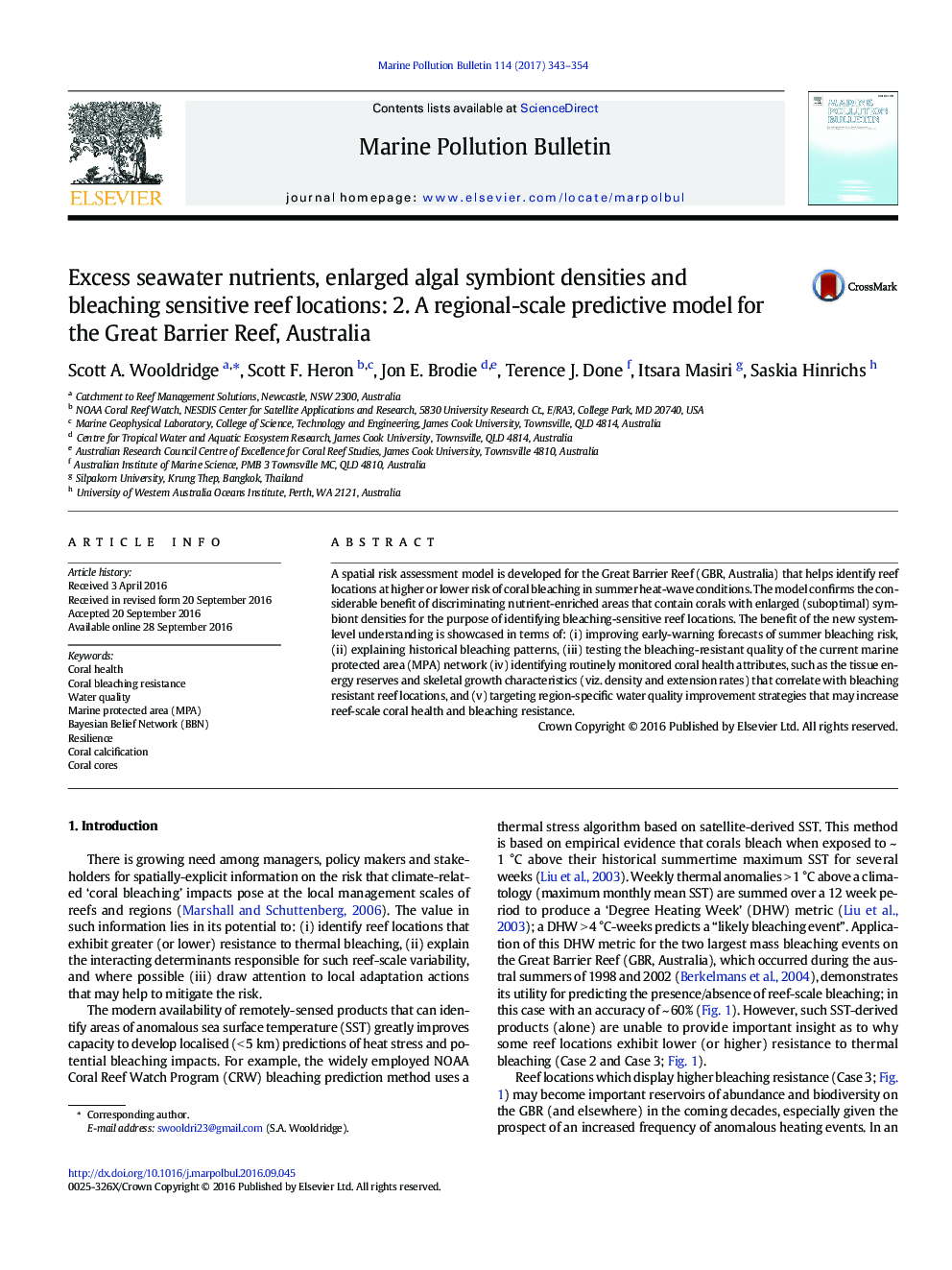| Article ID | Journal | Published Year | Pages | File Type |
|---|---|---|---|---|
| 5757798 | Marine Pollution Bulletin | 2017 | 12 Pages |
â¢Predictive model identifies differential sensitivity of individual reefs to thermal bleaching.â¢Bleaching sensitive reefs linked to identifiable coral morphology attributes.â¢Bleaching sensitive reefs scrutinized against current MPA zoning.
A spatial risk assessment model is developed for the Great Barrier Reef (GBR, Australia) that helps identify reef locations at higher or lower risk of coral bleaching in summer heat-wave conditions. The model confirms the considerable benefit of discriminating nutrient-enriched areas that contain corals with enlarged (suboptimal) symbiont densities for the purpose of identifying bleaching-sensitive reef locations. The benefit of the new system-level understanding is showcased in terms of: (i) improving early-warning forecasts of summer bleaching risk, (ii) explaining historical bleaching patterns, (iii) testing the bleaching-resistant quality of the current marine protected area (MPA) network (iv) identifying routinely monitored coral health attributes, such as the tissue energy reserves and skeletal growth characteristics (viz. density and extension rates) that correlate with bleaching resistant reef locations, and (v) targeting region-specific water quality improvement strategies that may increase reef-scale coral health and bleaching resistance.
